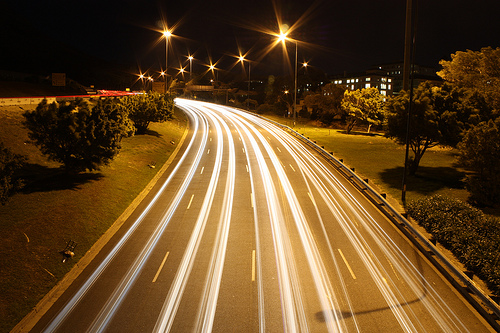Cars that communicate with each other — in order to protect drivers and passengers — are on the horizon, reports Wired. Vehicle-to-vehicle communication (V2V), which would allow vehicles to communicate with each other using radio signals to send and receive information on each car’s speed, position and direction, is on federal regulators’ minds and summarized in a recent report from the National Highway Traffic Safety Administration.

Companies like Google and Uber are already pushing the envelope in mobility tech – and promisingly, the federal government wants auto manufacturers to do even more. From Blyzz.
Radar and cameras are already doing some of the work in alerting drivers to dangers that V2V communication would also cover. But V2V would significantly bolster current safety features, such as blind spot warning systems, by letting a car know whether “a blind spot will be occupied momentarily, not just if it’s occupied currently,” as well as forward collision warning systems, by “’seeing’ beyond” just one car ahead.
“By warning drivers of imminent danger, V2V technology has the potential to dramatically improve highway safety,” NHTSA Deputy Administrator David Friedman said in a statement. “V2V technology is ready to move toward implementation and this report highlights the work NHTSA and DOT are doing to bring this technology and its great safety benefits into the nation’s light vehicle fleet.”
The agency’s report — an ANPRM, or advance notice of proposed rulemaking, which means NHTSA is in a research stage prior to confirming any new requirements for vehicle safety — sums up three distinctive scenarios where V2V communication would beat out existing technology’s benefits:
- Emergency Electronic Brake Light (EEBL): Some cars already offer emergency stop systems that rely on radar and camera to “see” the very next car ahead. But this technology isn’t able to view any further down the conga line of cars. The EEBL’s V2V communication would warn drivers when a car further ahead abruptly brakes, ideally giving the driver enough time to react.
- Intersection Movement Assist (IMA): This function would alert drivers to potential collisions while approaching a blind intersection on a collision course. Existing camera and radar technology can’t perform the same task, as vehicles in this scenario aren’t able to “see each other” coming.
- Left Turn Assist (LTA): LTA would caution drivers not to make a left at an intersection when oncoming traffic is blocked by other cars. As Wired notes, Volvo does include a similar function in its new XC90 model, but the technology is confined to those cars it can see: “If a vehicle were approaching the intersection behind a truck or other obstacle at speed, only the V2V system could give adequate warning.”
Yet V2V’s implications for vehicular safety are already compelling. The LTA and IMA functions alone are projected to prevent up to 592,000 crashes yearly, and to save an estimated 1,083 lives. “Safety is our top priority, and V2V technology represents the next great advance in saving lives,” U.S. Transportation Secretary Anthony Foxx said. “This technology could move us from helping people survive crashes to helping them avoid crashes altogether – saving lives, saving money and even saving fuel thanks to the widespread benefits it offers.”